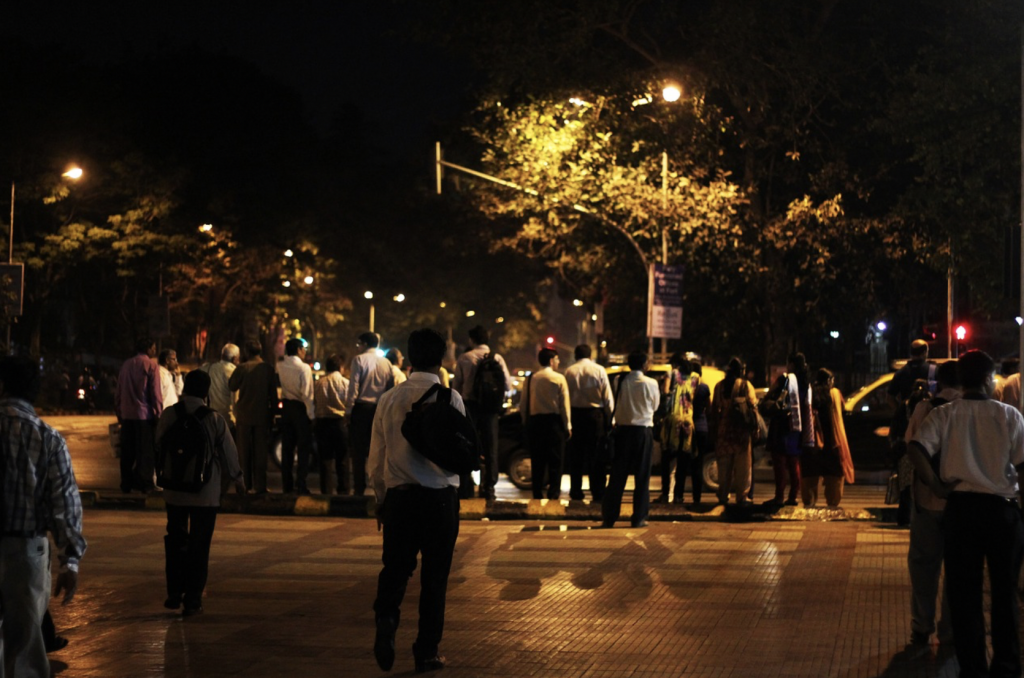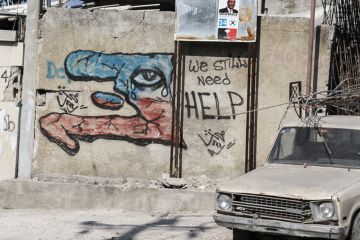
Context of sexual assault in India
Over the past decade, reports of rape in rural and urban areas of India have been consistently increasing.[i] In 2012, the infamous “Nirbhaya case”[ii] – in which 23-year-old Jyoti Singh, while traveling in Delhi, was gang-raped, beaten, and killed – garnered global attention. Under public scrutiny, certain “amendments” were made by the government to laws relating to rape. Chief Justice S.A. Bobde made the promise of “effective and speedy investigation and trial.” [iii] In the following years, however, those changes proved to be inconsequential as more rape cases were being reported in 2017 than in 2012.[iv]
In India, the barriers faced by rape victims in trying to get law enforcement to act on their charges are extremely difficult to overcome. The South Asia Director for the human rights group Human Rights Watch (HRW), Meenakshi Ganguly, stated, “It takes time to change mindsets, but the Indian government should ensure medical, counselling, and legal support to victims and their families, and at the same time do more to sensitize police officers, [and] judicial officials…”[v] Victims from weaker economic backgrounds seem to face striking challenges in trying to get police officers to report their cases, despite the fact that police officers can be charged with up to two years in prison for wilfully not reporting rape cases.[vi] There has been ongoing political turmoil due to the government’s mishandling of environmental laws, which led to unprecedented pollution levels in 2019.[vii] Along with the aforementioned unrest, public pleas by Delhi’s Chief Minister Arvind Kejriwal to stop rape are frequently heard on radio stations and on television – and the spotlight shines on the volatile state of women’s safety in the country.
A chronological account of the Unnao case
In December 2018, the victim initially reported being abducted and raped by two men: Shubham and Shivam Trivedi. She proceeded to file a case against them in March 2019, leading to the conviction of Shubham, who was found guilty. On the 30th of November, 2019, no more than about nine months later, Shubham was released on bail.[viii] The case against him was ongoing, with the victim appearing in court whenever necessary. According to the victim, immediately after securing bail, Shubham started following and threatening her, demanding she drop the charges. The victim, along with her family, visited their local police station on multiple occasions, mentioning the stalking and potential threat of violence. The police, however, did not give the issue due weight, instead opting to ignore it completely. The victim ultimately decided not to drop charges and to attend her next court date, which was on the 5th of December.[ix]
While on her way to court in the morning of the 5th of December, barely four days after the release of the perpetrator Shubham Trivedi on bail, she was abducted by five men. Following the abduction, she was physically attacked, beaten and stabbed multiple times. The criminals didn’t just stop there – she was doused in kerosene, and set on fire.[x] Reportedly, the victim ran for over one kilometre before she was spotted by eyewitnesses. Ravindra Prakash, a man working outside his house in a nearby village, noticed the victim and helped her. She dialled the police, and help arrived after her call. She was transferred to a renowned nearby civil hospital, where it was determined that the burns were likely to prove fatal and that she was in critical condition. Keeping the slim chances of her survival in mind, doctors suggested she be moved to a better hospital in Delhi. That evening, she was airlifted and transported to Safdarjung Hospital in the capital.[xi] However, at 11:40 PM the next day, she suffered cardiac arrest and passed away. “We tried to resuscitate her, but she could not survive and at 11:40 PM she died,” said Dr. Shalabh Kumar, HOD Burns and Plastic at Safdarjung Hospital.[xii]
The events that followed
In the aftermath of the case, the superintendent of the Unnao Police Department, Vikrant Veer, stated that, “All five accused – Shivam Trivedi, his father Ram Kishore Trivedi, their neighbour Shubham Trivedi, latter’s father Harishankar Trivedi, and their other neighbour Umesh Bajpayi – have been booked under sections 307 (attempt to murder), 326 (voluntarily causing grievous hurt by dangerous weapons or means), 506 (punishment for criminal intimidation) of the Indian Penal Code. After being produced in court, they all were sent to district jail on Friday (6th December, 2019). Earlier, their statements were recorded. Now, police will file the remand application soon in the matter.”[xiii]
Shockingly, another high-profile case emerged soon after wherein a 26-year-old veterinarian in Hyderabad was raped by four men while on her way back from work. In this case, however, the police shot dead all four rapists when they allegedly tried to open fire on the police by snatching their weapons: this happened when the police took them to the crime scene in an attempt to recreate it. The public was overjoyed, celebrating the bravery of the police officers by setting off fireworks. Many have suggested that there might not have been any attempt by the criminals to open fire on the police.[xiv]
The public reacts
The tardy reaction of the law in the Unnao case directly led to the death of the victim. The fact that the police did not investigate the reported stalking highlights a crucial issue. In fear of receiving no response or assistance from the police, victims opt to stay quiet. Even when they come forward, they are often shamed in police stations and courts for being targets of sexual assault.[xv] “The attempt at shaming the victim is still very much prevalent in the courts,” says Rebecca Mammen John, a distinguished senior criminal lawyer in Delhi.[xvi]
The vast majority of the Indian public has, as a result of over 92 daily rape cases on average,[xvii] called for the capital punishment for convicted rapists. Perhaps a change and tightening of legislation is indeed what will lead to a much-needed decline in instances of sexual assault. However, as aforementioned, this must be accompanied by changed mindsets. It will be a slow and arduous process, but it would contribute substantially to a united stand against rape – not only in India, but all around the world. As human rights are increasingly advocated for across the globe, the fight against sexual assault continues.
Edited by Mira Cantor
[i] Rautray, Samanwaya. “Rape Law Changes after Nirbhaya Case Haven’t Worked, Says SC.” The Economic Times. Economic Times, December 19, 2019. https://economictimes.indiatimes.com/news/politics-and-nation/rape-law-changes-after-nirbhaya-case-havent-worked-says-sc/articleshow/72878784.cms?from=mdr.
[ii] “Nirbhaya Gang Rape: Latest News, Videos and Nirbhaya Gang Rape Photos: Times of India.” The Times of India. The Times of India, January 29, 2020. https://timesofindia.indiatimes.com/topic/nirbhaya-gang-rape.
[iii] Rautray, Samanwaya. “Rape Law Changes after Nirbhaya Case Haven’t Worked, Says SC.”
[iv] Rautray, Samanwaya. “Rape Law Changes after Nirbhaya Case Haven’t Worked, Says SC.”
[v] “India: Rape Victims Face Barriers to Justice.” Human Rights Watch. HRW, August 6, 2019. https://www.hrw.org/news/2017/11/08/india-rape-victims-face-barriers-justice.
[vi] Indian Penal Code, section 166A, introduced by the Criminal Law Amendment Act, 2013; POCSO Act, s. 21.
[vii] “India Air Pollution at ‘Unbearable Levels’, Delhi Minister Says.” BBC News. BBC, November 4, 2019. https://www.bbc.com/news/world-asia-india-50280390.
[viii] Abhishek, Kumar, and Shivendra Srivastava. “Unnao Rape Victim Thrashed, Stabbed, Burnt Alive: Haunting Details of the Case.” India Today. India Today, December 6, 2019. https://www.indiatoday.in/india/story/unnao-rape-victim-thrashed-stabbed-burnt-alive-haunting-details-of-the-case-1625633-2019-12-05.
[ix] Abhishek, Kumar, and Shivendra Srivastava. “Unnao Rape Victim Thrashed, Stabbed, Burnt Alive: Haunting Details of the Case.”
[x] Gaur, Vatsala. “23-Year Old Unnao Rape Survivor Dies after Being Burnt Alive by Accused.” The Economic Times. Economic Times, December 7, 2019. https://economictimes.indiatimes.com/news/politics-and-nation/day-after-being-set-afire-unnao-rape-victim-dies-at-safdarjung-hospital/articleshow/72409604.cms.
[xi] Abhishek, Kumar, and Shivendra Srivastava. “Unnao Rape Victim Thrashed, Stabbed, Burnt Alive: Haunting Details of the Case.”
[xii] Gaur, Vatsala. “23-Year Old Unnao Rape Survivor Dies after Being Burnt Alive by Accused.”
[xiii] Siddiqui, Faiz Rahman. “Five Accused of Setting Unnao Rape Survivor on Fire Sent to Judicial Custody: Kanpur News – Times of India.” The Times of India. The Times of India, December 6, 2019. https://timesofindia.indiatimes.com/city/kanpur/five-accused-of-setting-unnao-rape-survivor-on-fire-sent-to-judicial-custody/articleshow/72408369.cms.
[xiv] “Hyderabad Case: Police Kill Suspects in Rape and Murder of Indian Vet.” BBC News. BBC, December 6, 2019. https://www.bbc.com/news/world-asia-india-50682262.
[xv] “India: Rape Victims Face Barriers to Justice.” Human Rights Watch.
[xvi] “India: Rape Victims Face Barriers to Justice.” Human Rights Watch.
[xvii] “Unnao Rape Case: Indian Woman Set on Fire on Way to Hearing Dies.” BBC News. BBC, December 7, 2019. https://www.bbc.com/news/world-asia-india-50697139.




